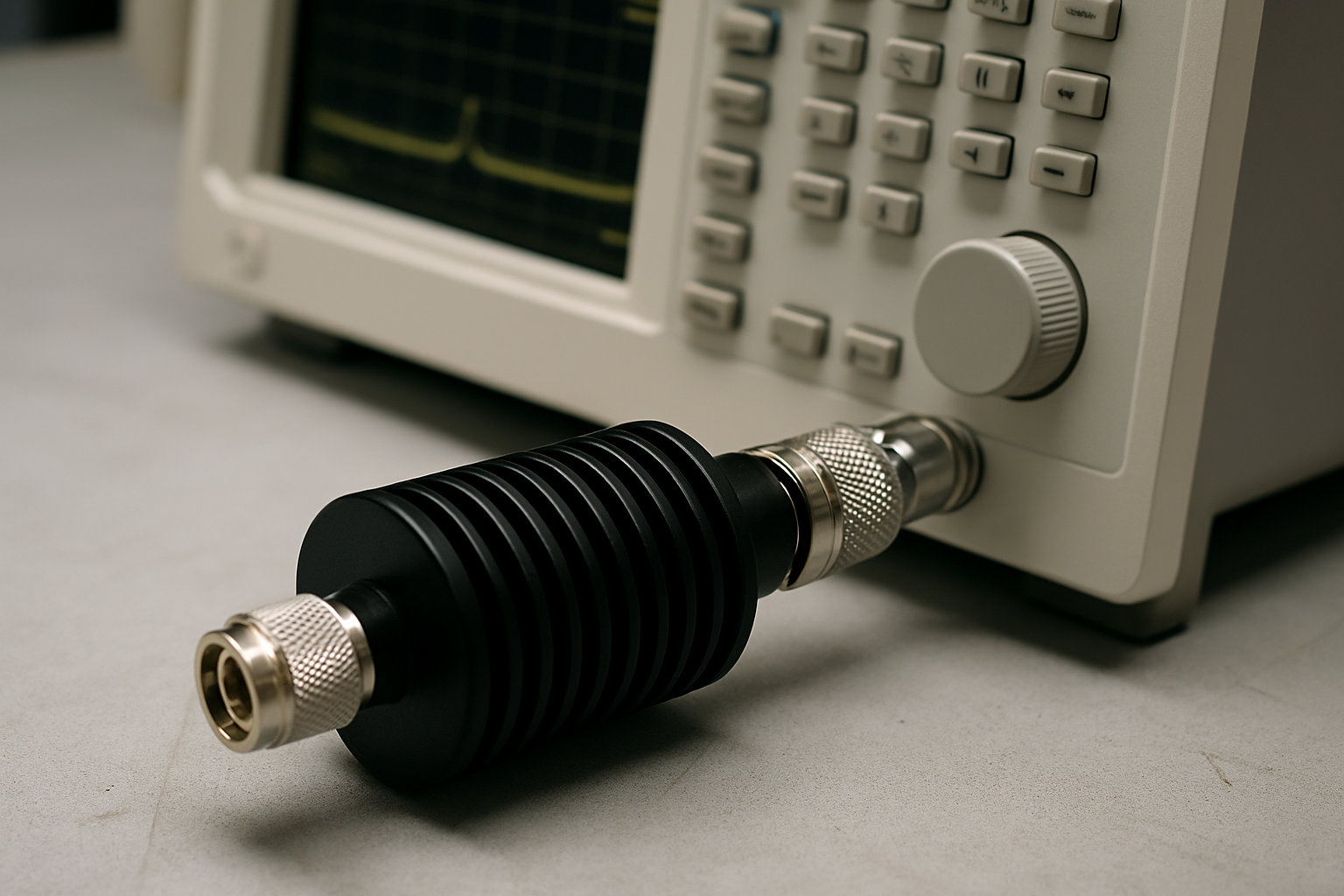Search for topics or resources
Enter your search below and hit enter or click the search icon.
September 16th, 2025
2 min. read
By Katie Wright

Attenuators and couplers don’t directly measure RF power — but they are critical components that make accurate measurements possible. Attenuators safely reduce high-power signals so sensors can handle them, while couplers sample a small fraction of the signal to provide forward and reflected power data. Both methods have been used for decades, and each comes with trade-offs in accuracy, calibration requirements, and application fit.
Attenuators and Couplers have been workhorses for decades — simple, effective, and still relevant in labs and field applications. But while both methods are familiar, they also come with accuracy challenges engineers can’t afford to ignore.
This is one of the simplest and most common setups for handling very high power RF levels.
How it works:
Strengths
Limitations
Engineering takeaway ⚡
Best suited for controlled lab environments or high-power transmitter testing but requires frequent recalibration. Without it, error margins can creep above 10%.
In this setup, a coupler samples a small portion of the RF signal and routes it to a terminating power sensor. Engineers can measure either forward or reflected power depending on coupler orientation.
Strengths
Limitations
Engineering takeaway ⚡
A flexible method for CW measurements and monitoring, but not recommended for precision pulsed RF. Treating the coupler as “transparent” is a common mistake.
|
Method |
Best Use Case |
Strengths |
Limitations |
|
High-Power Attenuator + Sensor |
High-power transmitters, calibration labs |
Rugged, handles very high power |
Bulky, thermal drift, no reflection data |
|
Directional Coupler + Sensor |
CW monitoring, VSWR/return loss |
Forward + reverse power, broad frequency coverage |
Sensitive to mismatch, poor pulsed accuracy |
Attenuators and couplers remain fundamental RF power measurement tools. But accuracy depends on how well you manage their limitations. Understanding their strengths and limitations helps engineers choose the right setup — and avoid accuracy pitfalls.
👉 Resources for You:
In our next post, we’ll answer another key question: Can oscilloscopes and spectrum analyzers measure RF power accurately?
Katie Wright is Vice President of Product Marketing and Strategy at BirdRF, a leader in RF power measurement. With an engineering background and deep industry knowledge, she develops growth strategies that expand opportunities and strengthen brand visibility. Katie combines technical expertise with strategic leadership to help BirdRF deliver innovative solutions that keep customers ahead in RF technology.
Topics: